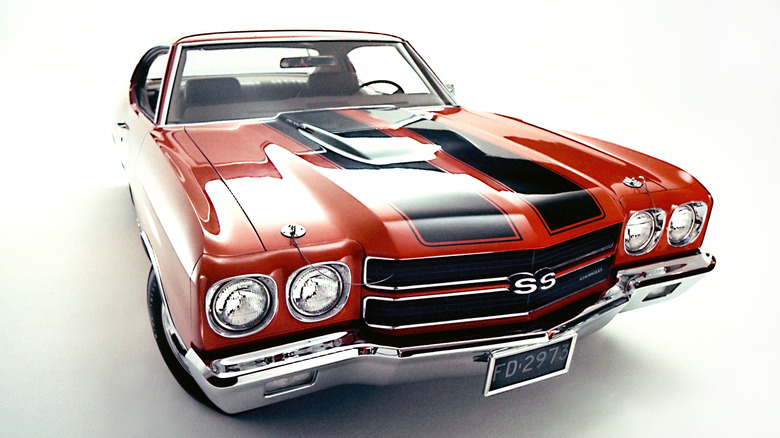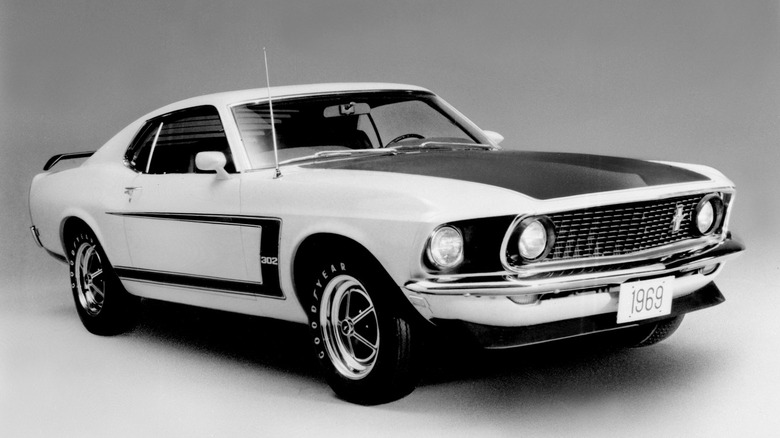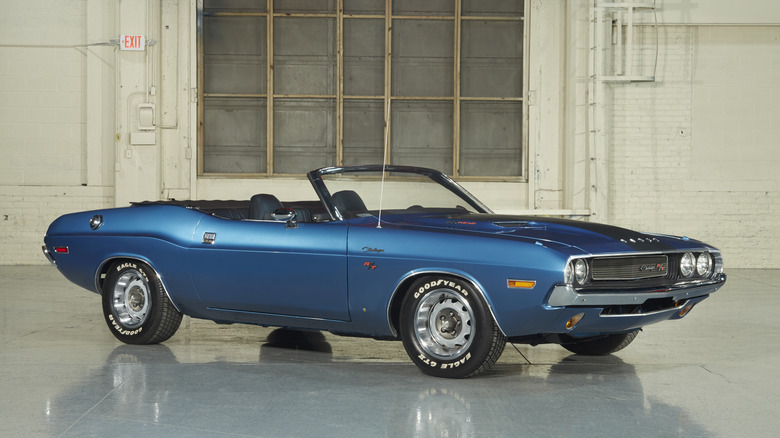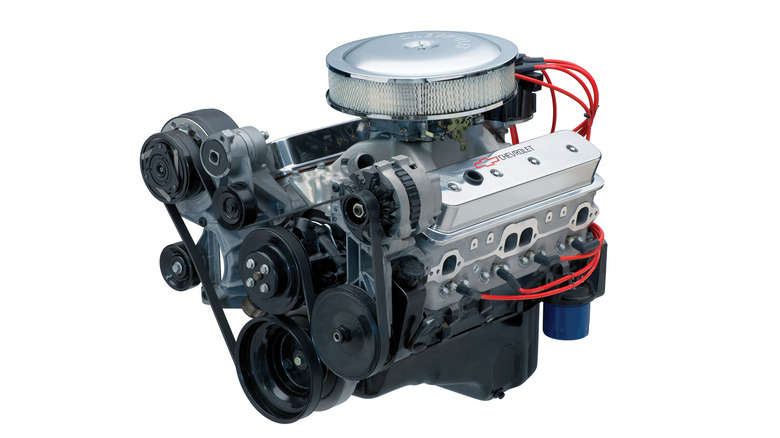Big Block Vs. Small Block V8 Engines: Here's What Every Gearhead Should Know
For American muscle cars, the engine is just about the most important aspect. After all, "What's that have in it?" might be the most common question you'll get when showing off your car after "What is it?" If you choose to modify your car or construct it from the ground up to be a racing machine, you might have an easier time picking a sports team to root for than narrowing the choices down to a specific engine to drop into your build.
Modern muscle cars don't have this dilemma as the engine choices are fairly limited out of the factory. But when it comes to vintage cars from the 1950s until the 1970s, your imagination (and ability to weld or fabricate) is the limit. Engines from the Big Three (Ford, General Motors, and Chrysler) generally fall into two categories: big blocks and small blocks. Although it made many iconic cars like the Gremlin, Javelin, and Eagle, the American Motors Corporation did not offer or manufacture any big blocks in its muscle cars.
Small blocks: cheap power
If you want to go fast, and you want that ability right now with very little cost, a small block may be right for you. Generally, small blocks have a displacement of less than 400 cubic inches (via CJPonyParts). In the 1960s, long before efficient four-cylinders became commonplace, engine options for the family hauler were either a six-cylinder or a small-displacement V8. As such, examples are extremely easy to find. The average small block V8 pulled out of a 50-plus year old station wagon will need some work before it's ready for the track, but it will be cheap. Plus, modders today have the advantage of the Internet where no matter what engine you're working on, there are likely hundreds of available aftermarket accessories.
General Motors offered the perhaps most versatile engine in the world in the form of the Chevy Small Block. The most popular displacement by far is 350 cubic inches. but it was also commonly offered with a displacement of 327 cubic inches. For the Chrysler fans, you will most commonly see either a 318 cubic inch engine or a 360 cubic inch model. These engines were in everything from the Barracuda muscle cars to work vans. Ford made the 302 Windsor V8 and two different 351 cubic inch V8s often called the Cleveland and Windsor, respectively (via MotorTrend). There were dozens of other small block V8s manufactured in the golden era of muscle cars, but these displacements are the most common in circulation.
Big block: no replacement for displacement
In 2023, no modern muscle car offers what would be classified as a big block. Even the most hellacious variations of the Dodge Challenger Hellcat top out at a displacement of 392 cubic inches. But if you had a big block in 1970, it was akin to a nuclear weapon at any informal drag race. Generally, big blocks are capable of putting out significantly more power than small blocks in their stock configurations. Big blocks are also heavier and dimensionally larger than small blocks, meaning that you should either have the prerequisite amount of engine bay real estate handy, or you'll need to get ready to do a lot of cutting and welding to get the engine in place. If you want big power, a lot of nosie, and you don't care about weight, space, or cost, a big-block is the way to go.
Chrysler made the 440 cubic inch big block and the famous 426 HEMI. Ford has the 427, the 429, and the 460, and General Motors had the Chevy 454 and a smattering of other less commonly seen big blocks from Oldsmobile, Buick, and Pontiac (via MotorTrend). Chevy currently offers big block crate engines with a displacement as large as 632 cubic inches.
The verdict
According to MotorTrend, the best "bang for the buck" engine is the Chevy 350 cubic inch small block ... if you don't care about brand. It has the best aftermarket support of virtually every engine ever made and is capable of handling gobs of horsepower and torque. If you want an absolute bargain-basement cast-iron model, look no further than your local junkyard. You will likely find multiple examples if you know where to look. Chevrolet still manufactures the crate engine if you want a brand new one, and there are literally hundreds of aftermarket parts stores dedicated to making parts for that engine.
Big blocks are fun, flashy, and very good at converting gasoline to tire smoke and noise. If you want cost-effective performance with as few unnecessary headaches as possible, look no further than Chevy. The small block is the way to go if you're racing with either a budget in mind, or maximizing every possible metric with an Excel spreadsheet.



